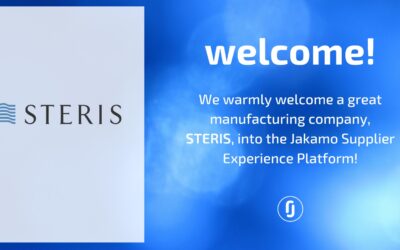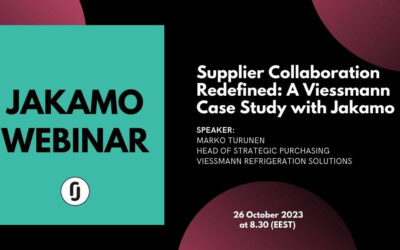How to get started with supplier sustainability?

It is really unusual to find a company strategy without a high emphasis on sustainability topics these days. Rightly so, current and future generations are facing the existential challenge of climate change. In addition to the future of our planet, companies have a lot more practical reasons to put their focus on sustainability: for example, the new EU Corporate Sustainability Reporting Directive (CSRD) comes into effect in 2024 and binds companies with certain criteria to comply with new sustainability reporting requirements.
The role of supply chain and procurement in serving the company’s triple bottom line is huge. Not only the majority of the operating costs of an organization but also around 90 % of CO2 emissions can be attributed to supply chains. Thus, the upcoming requirements should have a big effect on the priorities of supply chain and procurement leaders. It might be stressful, but on the bright side, there is a great opportunity for procurement to gain an even bigger strategic role in the organization and serve the company strategy firsthand.
Developing sustainability reporting and implementing improvements requires a lot of work on operative purchasing and supplier management, but before that, it is wise to get the basics right by creating a good big picture of your suppliers’ sustainability commitments and actions. Let’s start by putting a proper data collection system in place!
1. What are your ESG criteria for suppliers?
Supplier requirements are drawn from your company’s environmental, social, and governance ambitions, but there are of course a lot of good frameworks for ESG indicators to use as examples. In addition to asking for supplier commitments, it is important to include more concrete metrics.
Common metrics for the environmental aspect of sustainability are CO2 and other types of emissions, the amount of waste and energy consumption metrics such as electricity and water consumption in production and offices, and the percentage of renewable energy sources out of all consumption. Also obtained certificates are good indicators – for example, ISO 14001 is focused on environmental management.
Social sustainability can be measured with e.g., employee well-being and satisfaction, tracking safety incidents, employee diversity, and the number of community engagement programs.
2. Where to collect data on supplier sustainability?
Who has time to collect sustainability data from hundreds of suppliers? This is a relevant question presented by many leaders in the manufacturing industry – and it is definitely true that some effort is required to keep the data accurate. Thus, one of the key requirements for the data collection solution is that it should make collecting sustainability data as easy as possible.
Hiring a specialist to focus only on collecting sustainability data from suppliers might not be the most far-reaching step to take. Instead of creating another silo around sustainability, viewing sustainability data collection as a part of all normal supplier management processes and systems ensures there will be permanent improvements. For example, if there are good practices for assessing supplier compliance in place, adding sustainability requirements is a natural step in enhancing the existing process.
Sustainability data will be a crucial part of supplier management in the future, and it is best supported by holistic and well-integrated systems. One requirement for a good data collection solution is of course the good accessibility that allows utilizing the master data in different visualization and reporting solutions.
3. How to improve supply chain sustainability with the data?
Improving the supply chain sustainability means either selecting the most compliant suppliers or developing a supplier base, both of which require accurate data.
When there is a clear view of the current situation, it is easier to take improvement actions and encourage more sustainable practices among suppliers. Encouraging can take different forms ranging from training materials for suppliers, supplier prioritization based on sustainability measures, building common roadmaps in sustainability development, and including ESG metrics in contracts.
Sustainability requirements are also another step towards more strategic organizations: while repetitive manual tasks can be automated, the focus is shifting to developing deeper supplier relationships and more sustainable ways of manufacturing and collaborating.
Riina Puhakka
Sales Executive at Jakamo
This blog post was published originally in Jakamo’s online magazine Supplier Experience on 04 July 2023.
E-book: Supplier Experience
Supplier Experience – The Fundamentals of Modern Supplier Collaboration is a carefully crafted guide that presents the concept of Supplier Experience through six practical lenses. Download your free copy!
Recent Posts
- Jakamo Business Central ERP Connector Now Available in Microsoft Marketplace
- Insta Group strengthens supplier collaboration and sustainability efforts with Jakamo
- TECHSAVVY MEDIA: Supply chain expert – Relationships with your suppliers are key to greener manufacturing
- Fastems Advances Supply Chain Sustainability with Jakamo
- Jakamo achieves ISO 27001 certification






